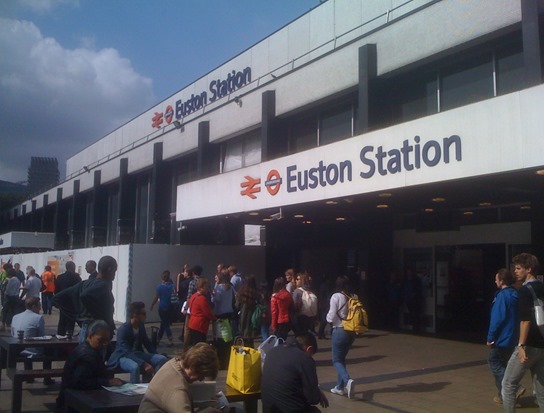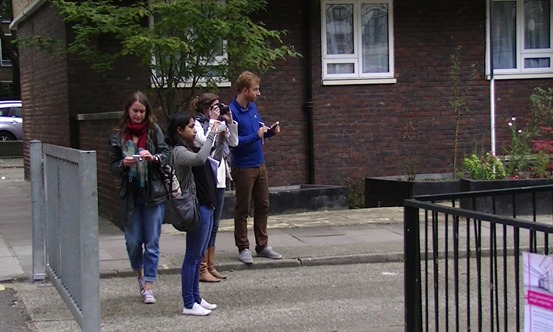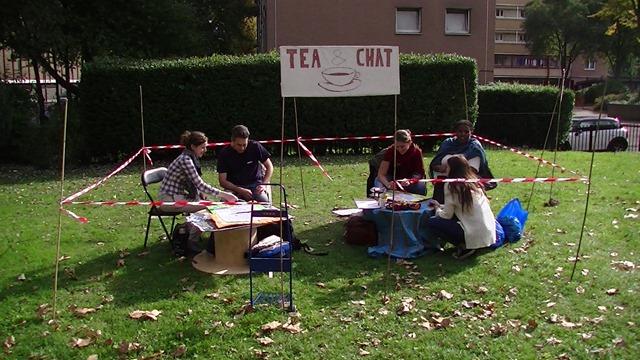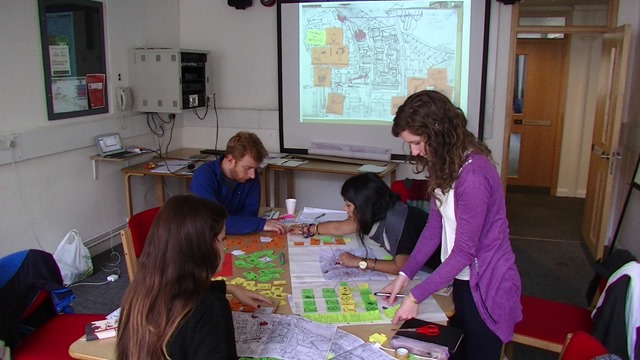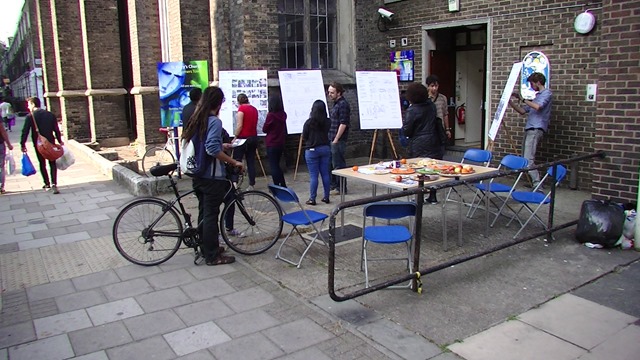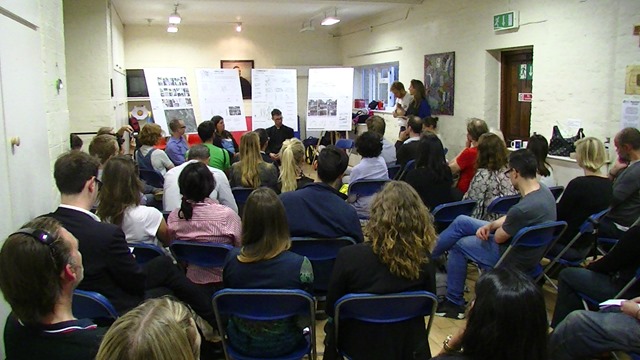I read the reports from the Change by Design workshops in Brazil, Kenya and Ecuador and decide to join the next in the UK. These workshops are organized by Architecture Sans Frontières UK, a non-profit that aims to bring forth community engagement in architecture practice and teaching. The workshops are based on participatory design sessions with deprived communities aiming to develop strategies they can use to negotiate with local authorities for better conditions for living and working.
In the workshop I joined, the target was the London community affected by the high speed connection to Birmingham, HS2. The connection will cost around 50 billion Pounds and will transform part of London in a big construction site. To accomodate the expansion of the Euston Station, 3 to 6 housing units will be demolished and many streets will remain closed for many years.
The point of the workshop was to assess the impact of this construction project in the lives of people living and working around the station and to collect ideas on how the development could be benefficial at the local level.
I collaborated with the group looking at the housing estate close to the station. We began by walking around the estate and observing how is life like.
We learnt that many people were quite angry at the HS2 development and would not want to talk to someone approaching them on the streets. We devised a more inviting way of approaching people, inviting them to enter our temporary home and have a cup of tea and a little chat. This worked quite well.
While having a chat, we would show a map of the neighboorhood and ask targeted questions about the quality of life provided by the housing estate. We took note of what people wants to keep and what they would like to change. Summarizing this feedback and relating them together took a lot of data analysis work.
Finally, the perceptions collected about future developments in the area were compiled into posters and exhibited at a local Church, which was followed by a debate with the representatives of the Camden Council, London Citizens and the tenant association of the housing estate.
My role in the dwelling group was mainly to observe and document the work process taking pictures and notes of what was being done. Since I don’t have so much experience in the field, I made few remarks in the discussions. I was eager to support my group specially in physical tasks such as finding useful rubbish to build our temporary home at the Regent’s Park Estate. In this exercise, I stayed mainly in the forefront, trying to catch the attention of the passing-by. I was not always succesful in that, but I manage to convince one tenant to visit his flat and take some pictures. This was a touching experience.
Change by Design is a great opportunity to learn how participatory design can be practical and relevant for community engagement in urban planning and architecture. The next one will be held in South Africa around April 2016.
